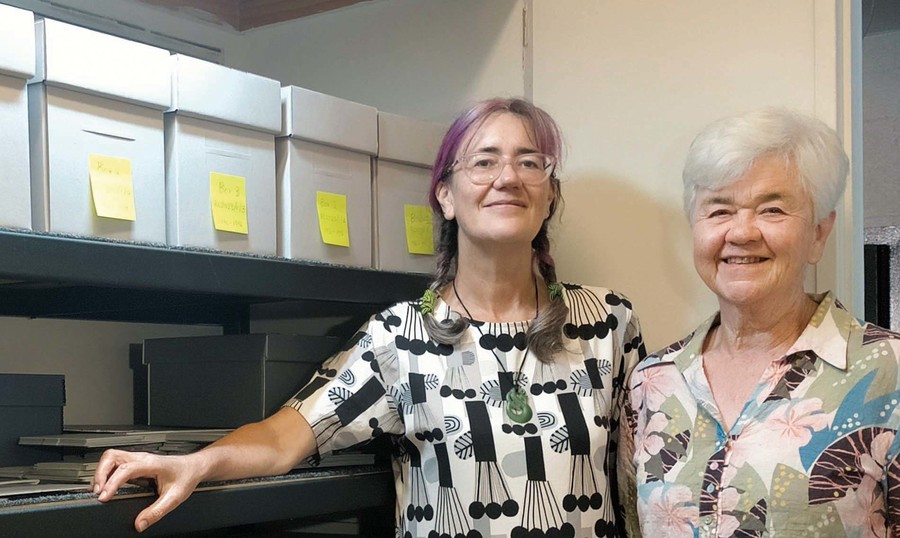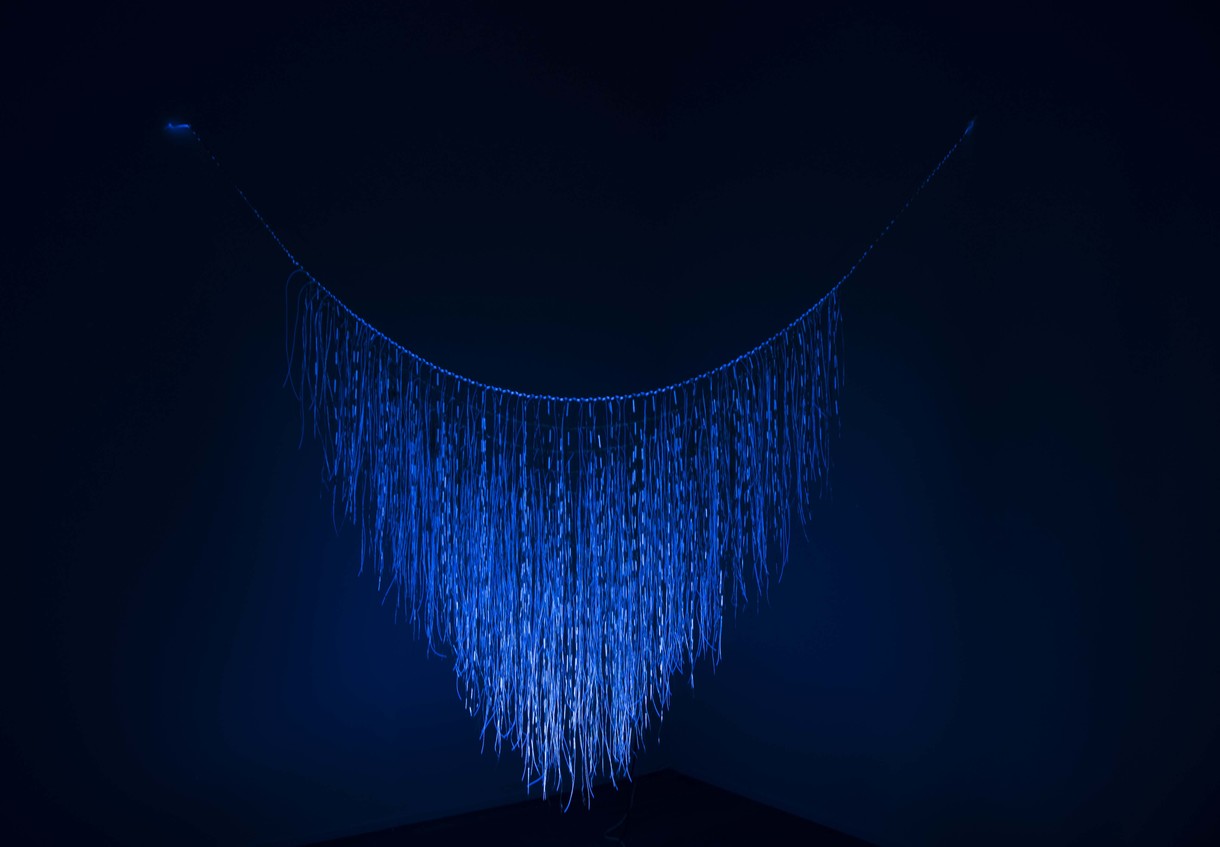The Maureen Lander Archive
A kōrero between Maureen Lander and Kerry Lander

Kerry and Maureen Lander in June 2023.
After nearly forty years as a practicing artist, Maureen Lander (Ngāpuhi, Te Hikutu, Pākehā) is developing a digital archive of photographs and related materials documenting her career to date. This has been made possible by the return of her daughter Kerry to Aotearoa New Zealand after twenty- three years in Australia. Assisted by Heritage Studios staff and funding from Creative New Zealand, Kerry is working to archive and digitise everything, which will eventually be available to the public. Maureen and Kerry share thoughts about the process so far.
Kerry Lander: What made you start your ‘file box archive’ back in your early exhibiting career?
Maureen Lander: After I completed my BFA at Elam in 1986 I started working as a photographer for the Anthropology Department at the University of Auckland. They had a photographic archive and I became aware of the importance of storing my own photos and slides in archival sheets and folders. So I guess that was a beginning for my own archive.
By then I was also finishing a BA and was just starting to exhibit my artwork. Already I had accumulated lots of research and art-related material and I needed to organise it so I could find things. I started grouping items into manila folders in file boxes marked for each year: research, university essays, gallery floor plans, installation proposals, correspondence from curators, reviews and so on. In each exhibition folder I also filed collected ephemera such as gallery invitations, cards, letters and feedback.
KL: Such as the drawings and letters by school kids in response to your early installation Pae in the Sky – that’s a favourite of ours, eh?
ML: Yes, I enjoy getting feedback from children.
KL: Now the file box archive is digitised, it’s becoming a legacy project that others can access. I’ve personally been fascinated by your processes: writing proposals, the lengthy correspondence between you and curators, the notes and concept drawings, even intriguing lists of possible titles. There are many gems to come across.
ML: Digitising the archive is already solving problems in access to past items. I get constant requests for images and information, but now you can find these much more readily than I used to be able to when searching my boxes. I’m glad you’re hands-on with the technical side of the digitisation process. You say you’re learning a lot?
KL: I’m certainly discovering processes that are brand new to me, including high resolution digitising using camera equipment rather than a scanner, Lightroom Capture software, Airtable for data entry, and the power of spreadsheets throughout the complex ‘reconciliation’ process.
ML: What’s the most surprising thing you’ve learnt?
KL: I’ve learnt a lot more about what you were doing besides ‘being a mum’, and what you were up to during my years in Australia. As for surprising things:
One: while our family knew your interest in your whakapapa, I didn’t know until reading your writings that you felt Māori from a young age, even while growing up Pākehā. For many years you expressed and explored te ao Māori through your art practice, but I hadn’t known how important it was to seek that part of your identity. You didn’t speak much to us about it, yet you spoke through your art. Your wisdom and personal mana is now something I’m seeing fully. Two: you’re extremely well-connected! From collaborators to weavers to curators to artist friends, I am often surprised by the numerous connections you have in the art world and your social life.
ML: I think I’ve pulled you in to some of that too – helping install work, attending meetings and hui, getting to know my artist friends. All that activity in my life is probably why I don’t have a lot of time to deal with the archive myself.
KL: We still have a fair bit of mahi to do in pulling the archive contents together. So far, I’ve been handling physical materials and analogue photos from 1984 through to the early 2000s, but after that time, these noticeably decrease as you gained more digitally born files.
ML: I know! We have to find and organise my digitally born files ready for the database. My digital photos, emails and attachments are scattered across old laptops and USB drives, and I haven’t been as meticulous about collating those all in one place. I recommend to artists to keep a hard drive for storing records of their work, and get in the habit of using it.
KL: As for other good archiving practices, we’ve had some excellent advice from Caroline McBride, librarian / archivist at the E. H. McCormick Research Library, at Auckland Art Gallery,1 where the archive is being housed.









